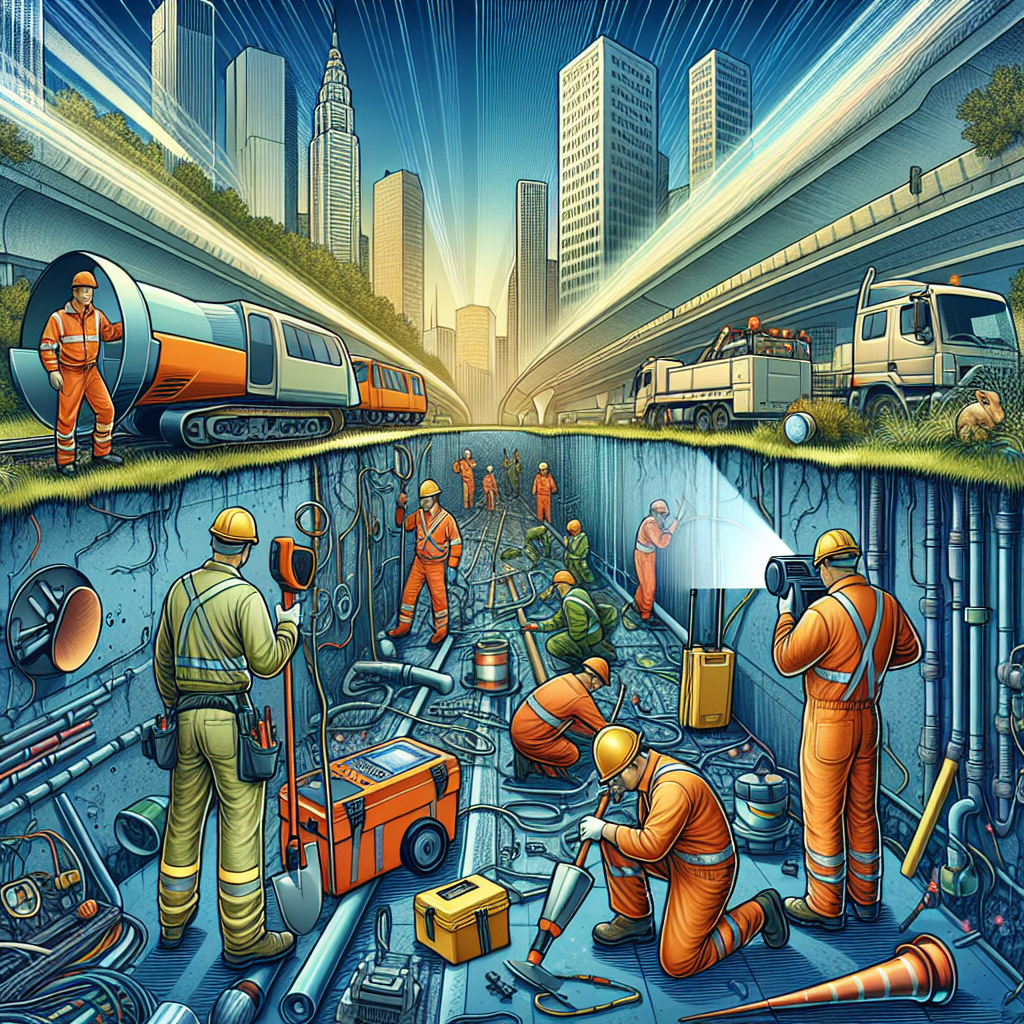Underground service locators are professionals trained to identify and map underground utilities such as gas lines, water pipes, electrical cables, and telecommunication lines. Their work is critical to prevent accidental damage, service disruptions, and potential hazards during excavation and construction activities. Understanding the techniques and technologies they employ is essential for anyone involved in construction or excavation projects.

Understanding Underground Service Locators
What are underground service locators?
Underground service locators are experts who specialize in using various methods and tools to detect, trace, and map underground utilities and services. Their primary goal is to provide accurate information about the depth, location, and type of buried infrastructure, allowing construction crews to work safely and efficiently.
Types of underground services
There is a wide range of underground utilities, including water and sewer lines, gas pipelines, electrical conduits, fiber-optic cables, and more. Each type of service requires specialized techniques for accurate location, making underground service locators a diverse group of professionals.
The Significance of Accurate Service Location
Accurate service location is paramount for several reasons:
Avoiding accidents and damage
Incorrectly identifying the location of underground utilities can lead to catastrophic accidents, injuries, and costly damage to infrastructure. Proper service location helps prevent these disasters, safeguarding lives and property.
Compliance with regulations
Many local regulations and building codes mandate the use of underground service locators to ensure safety and compliance during excavation and construction. Failing to adhere to these regulations can result in fines and legal issues, adding unnecessary expenses and delays to your project.
Common Techniques for Underground Service Location
Several techniques are commonly used by underground service locators:
Ground Penetrating Radar (GPR)
Ground Penetrating Radar (GPR) utilizes electromagnetic waves to create subsurface images. It’s highly effective for detecting a wide range of utilities and materials, making it a versatile tool for service location. GPR can identify buried objects such as pipes, cables, and even voids, providing valuable information for construction planning.
Electromagnetic Induction
Electromagnetic Induction is another reliable technique employed by locators. It involves inducing an electromagnetic field into the ground and measuring the response to identify buried conductive materials like metal pipes and cables. This method is especially useful when dealing with metallic infrastructure.
Vacuum Excavation
Vacuum Excavation is a safe and non-destructive technique that combines high-pressure water or air with vacuum technology to expose and locate buried utilities without damaging them. It’s an eco-friendly approach that minimizes environmental impact and reduces the risk of service disruptions.
Advanced Technologies in Service Location
The field of underground service locating has seen significant advancements:
3D Mapping and GIS Integration
Modern locators can create 3D maps of underground utilities, allowing for precise visualization and planning. Geographic Information Systems (GIS) integration enhances data management and accuracy, enabling construction teams to make informed decisions and reduce the likelihood of costly surprises.
GPS and GNSS Technology
Global Positioning System (GPS) and Global Navigation Satellite System (GNSS) technologies provide accurate location data, improving the overall accuracy of service locating. These technologies enable locators to pinpoint underground assets with high precision, reducing the margin of error in excavation projects.
Artificial Intelligence in Service Locating
Artificial Intelligence (AI) is revolutionizing service location by enhancing data analysis and interpretation. AI-driven algorithms can analyze data more efficiently, helping locators interpret complex information and make accurate assessments. This technology contributes to faster and more reliable results.
Challenges and Limitations
While underground service locators are essential, they face various challenges and limitations:
Factors affecting accuracy
Accuracy can be affected by soil conditions, interference from nearby utilities, and the age and material of underground infrastructure. It’s crucial for locators to consider these variables when conducting their work and to communicate any uncertainties to project managers.
Environmental conditions
Weather and environmental factors can impact the effectiveness of certain techniques, making accurate location more challenging under adverse conditions. Locators need to adapt their methods and equipment to ensure reliable results in varying environments.
Benefits of Professional Service Locators
Why should you hire professionals for your service location needs?
Why hire experts?
Professional underground service locators have the expertise, training, and equipment to provide accurate results and ensure safety. They undergo extensive training to handle complex scenarios, ensuring that all potential risks are mitigated.
Cost savings in the long run
Investing in professional service location can prevent costly damages, repairs, and delays, ultimately saving you money. The upfront cost of hiring experts is a wise investment that pays off by avoiding unforeseen expenses and project setbacks.
DIY Service Location Tips
In some cases, you may consider attempting service location on your own:
When to attempt DIY locating
Simple tasks like locating property lines or non-critical utilities may be suitable for DIY efforts, provided you have the appropriate tools and knowledge.
Safety precautions
If you decide to undertake DIY service location, follow safety guidelines to protect yourself and the environment. Always call 811 or your local utility locating service before digging to ensure you’re aware of any potential hazards in your area.
Choosing the Right Underground Service Locator
When hiring a service locator, consider the following factors:
Factors to consider
Evaluate the locator’s experience, reputation, and technology to ensure they can meet your specific needs. Ask for references and reviews to gauge their track record of accuracy and professionalism.
Questions to ask potential providers
Before making a decision, ask potential service locators about their methods, pricing, and timelines. A transparent discussion will help you choose a provider that aligns with your project requirements and budget.
Conclusion
Accurate underground service location is a critical component of safe and efficient construction and excavation projects. By understanding the techniques and technologies used by underground service locators, you can prioritize safety and compliance while avoiding costly accidents and disruptions. Whether you choose to hire professionals or attempt DIY service location, make informed decisions to protect your investments and the community.

